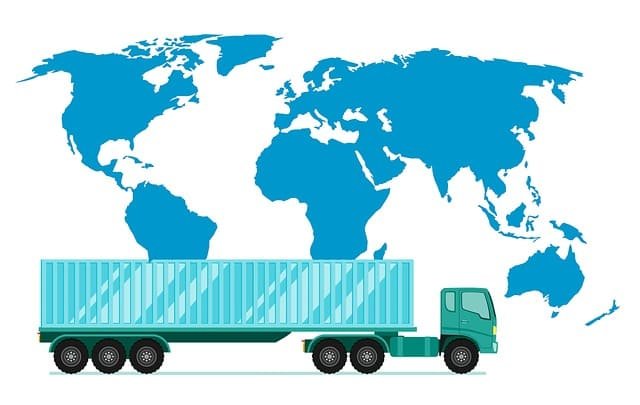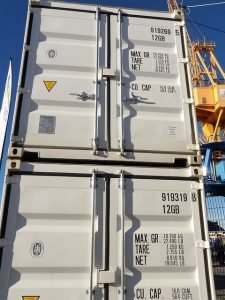This article aims to reflect on the complex relationship between container regulation and standardization and innovation, recognizing that the balance between the two is essential to foster sustainable and dynamic progress in our modern society.
Currently, new technologies and businesses are facing off against public institutions in multiple scenarios. Headlines reflect this conflict: the banning of Uber in London and Paris, as well as the similar situation with Airbnb in Prague and Berlin, are just a few examples. Opponents of the sharing economy argue for adhering to regulations, while proponents argue that these regulations do not apply to this form of economy.
With over 20 million maritime containers in the world, virtually everything moves through them.
The crucial point here is not to determine who is right in this debate. It is essential to recognize that this is not the first case of confrontation between regulation and innovation. Virtually in all eras, there have been conflicts similar to Uber or Airbnb. The problem is that these examples have been forgotten over time as laws change, and people face different circumstances.
Container Innovation: A Transformative Change
A paradigmatic example of innovation is the standardized cargo container. Currently, there are more than 20 million of these containers worldwide, and virtually everything is transported in them. This innovation, emerging in the late sixties, completely revolutionized the world, transforming the organization and operation of ports, the location of factories, and the development of international trade and globalization.
Before the arrival of containers, various goods were transported in different forms: pallets, boxes, barrels, bags, among others. The transportation of goods in the early 20th century did not differ significantly from previous centuries. Despite advancements in ships, trains, and trucks, the cargo was still mostly in the hands of loaders and unloaders at the ports. However, these forms of cargo had their problems.
Firstly, the costs were high. More than half of the cargo was allocated to transportation from the factory to the warehouse, passing through the train, docks, ship, and finally, the truck. This not only meant considerable expense but also considerable time.
Ships spent over a week in port to be unloaded and reloaded. Occasionally, goods were lost or stolen during this process. Often, the cargo didn’t even start due to local strikes. After the Second World War, the use of ship transportation decreased for these reasons.
Malcom McLean and the Paradigm Shift
All of this changed when a successful trucking entrepreneur, Malcom McLean, decided to act. While he was not the first to recognize the high costs and risks of the goods reloading process, nor the first to consider standardized containers as a solution, he was the first to understand their importance and change the paradigm.
In the United States, the transportation industry was heavily regulated in the first half of the 20th century.
McLean created a new ecosystem for containers, adjusting ports, ships, cranes, warehouses, trucks, and trains. Additionally, he developed an entirely new control system for the containers. He was far ahead of his time, even above the experts in multiple committees and offices in his field.
Regulatory Challenges and Business Strategies
However, implementing this paradigm shift was not straightforward. In the United States, the transportation industry was heavily regulated in the first half of the 20th century. Public institutions and regulators divided all sectors according to modes of transportation. They regulated everything from route designation and the number of people involved to the prices of transported items.
Furthermore, they did not allow a single company to be involved in multiple actions, such as driving trucks, transporting on ships, or renting ports with cranes and warehouses.
McLean, his lawyers, and accountants were aware of these regulations. However, to avoid them, they carried out various legal and financial operations that reorganized the ownership relationships in McLean’s companies before launching the new container transport.
When McLean was about to launch his new container transport model, competitors from trucking and railroad transportation denounced him and demanded the ban of his companies. A two-year battle began between the companies and the ICC (Interstate Commerce Commission) regulatory agency.
Representatives from railroad and trucking transport companies argued that McLean had illegally obtained a maritime transport company. Therefore, his business was illegal and should be prohibited.
Regulation and Standardization of the Container
In November 1956, the ICC investigator agreed with them. However, ultimately, in 1957, the Court rejected the investigator’s conclusion and allowed McLean’s companies to operate. By then, McLean had already been transporting his containers for over a year. McLean’s first cargo ship with containers departed in 1956 from the port of New Jersey in Texas. Loading the entire ship took 8 hours.
This time was extraordinarily short compared to the several days it took with the traditional method, and it was further reduced with better cranes and simultaneous unloading and loading of the ships. But what interested McLean was the cost of transporting a ton of goods. In 1956, the cost was around $5.83. McLean’s ship, the Ideal-X, managed to transport the same ton for 15.8 cents.
This way, McLean overcame the first regulatory barrier preventing his containers from dominating the world. However, this would not be the last. In the introduction, loaders and unloaders at the docks are mentioned. These workers had one of the most dangerous occupations and often passed the work from generation to generation.
In many cities, these workers had a distinctive social status; for example, in New York, not just anyone could load a truck. This work was exclusive to members of the so-called “public loaders” group, protected by various unions that determined who could work, for how much, and what could be loaded and unloaded at a port.
With the arrival of containers, this occupation became obsolete. Today, the static barriers of government regulations are overcome by new technological innovations and entrepreneurs.
Sixty years ago, workers fought against the arrival of containers, but their efforts were futile. In the years 1963-1964, Manhattan port workers accumulated a total of 1.4 million workdays.
This number reduced to 350 thousand in 1970-1971. In 1976, there were only 127 thousand workdays. Thus, in a decade, working hours at the docks were reduced by over 91%. We should not reject new inventions beforehand. Nowadays, few know about the regulatory and political pressure conflicts that containers faced before becoming a standard in goods transportation.
An innovation full of controversy sixty years ago, seen as illegal by many and whose viability was questioned by regulators, is now considered natural, something without which we cannot imagine life.
Public regulation is, by definition, static. Based on prior knowledge, a regulator will set conditions for the presence of a certain innovation.
However, they cannot foresee what will come in the future. By definition, innovation represents the opposite: innovators do not care about what has been done in the past or the current situation. Innovation projects the future.
Conflict arises when these two concepts clash in a particular case. Regulators judge innovation according to previous norms, while innovators judge regulation from their vision of the future.
Nowadays, new technological barriers and entrepreneurs surpass the static barriers of government regulations. Therefore, it is essential to take a step back and look at these issues from a broader perspective.
We can approach this dilemma in a simplistic way by asking if the new technology fits into the official regulatory framework or not. If it doesn’t, should we automatically ban it?
Reflection: Regulation, Innovation, and Future Vision
If our ancestors had unconditionally applied this approach in all cases, we would live in a completely different world today. Transport legislation did not anticipate Carl Benz’s first automobile; on the contrary, the Wright brothers did not seek permission from public institutions for their first flight.
Today, innovators and entrepreneurs enter an excessively regulated world, where every aspect of human activity is subject to official regulations or legal interventions.
We must question how new ways of doing things clash with the limited understanding of public regulators. If every innovation had to go through Parliament or Congress first, we would live in a world without innovation, a sadder world.





